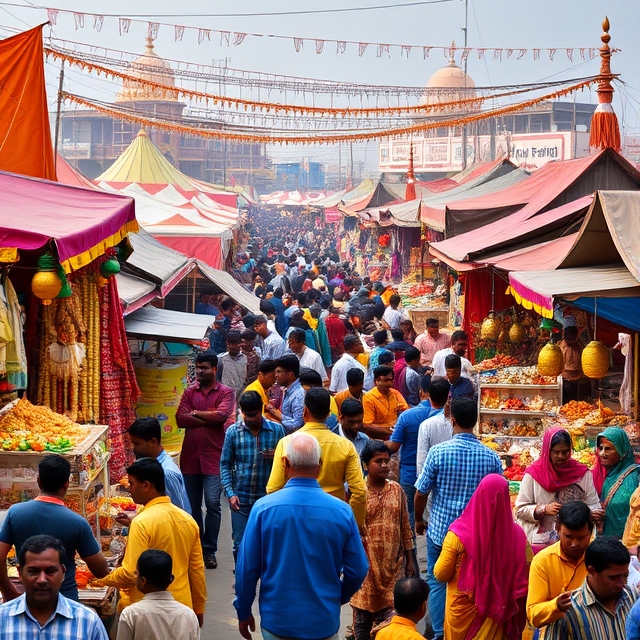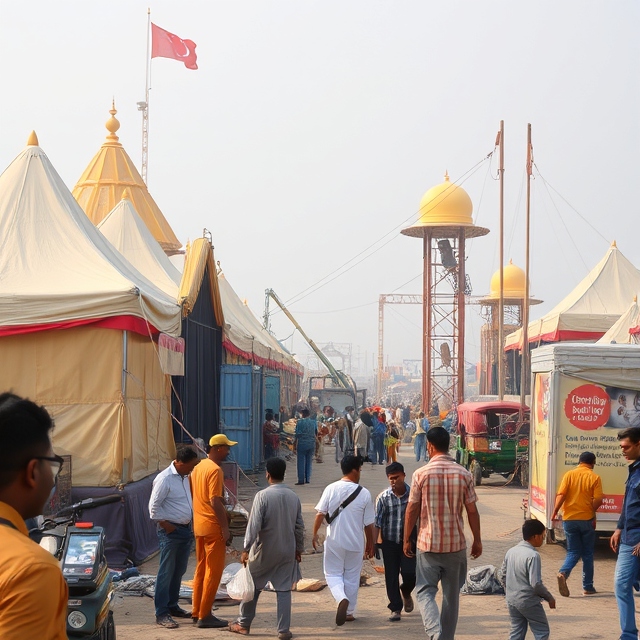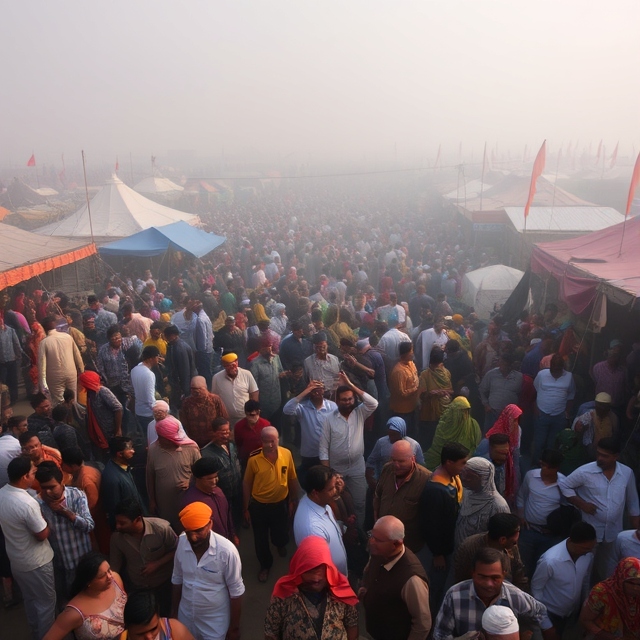Introduction
The Maha Kumbh Mela 2025 is one of the most significant religious gatherings in the world, drawing millions of devotees, tourists, and spiritual seekers. Its scale and impact extend far beyond the religious sphere, affecting local communities and the economy of the host cities. In this blog, we will explore the profound impact of Kumbh Mela on the local communities and the economy, shedding light on the various ways it transforms the region and contributes to its growth.

Economic Impact on the Host City
One of the most noticeable impacts of the Maha Kumbh Mela 2025 is its economic contribution to the host city, typically cities like Prayagraj, Haridwar, Ujjain, or Nashik. The influx of millions of pilgrims and tourists during the event stimulates several sectors, such as:
- Hospitality: Hotels, guesthouses, and temporary tents experience a surge in bookings. Local businesses catering to food, transportation, and entertainment also see a significant rise in demand.
- Retail and Vendors: Street vendors selling religious paraphernalia, clothes, and food thrive during the Kumbh Mela. Local artisans and manufacturers benefit from the increased demand for their goods.
- Transport and Infrastructure: The large-scale transportation requirements, including buses, trains, and taxis, create employment opportunities. Construction and upgrading of infrastructure like roads, bridges, and public facilities are essential to accommodate the crowds, which further boosts the economy.
Overall, the Maha Kumbh Mela injects millions of rupees into the local economy, benefiting not only large businesses but also small-scale vendors and entrepreneurs.

Employment Opportunities and Skill Development
The Maha Kumbh Mela 2025 creates short-term and long-term employment opportunities for local residents. These jobs span across various sectors:
- Event Management and Logistics: Organizing the Mela requires coordination in transportation, security, crowd control, and more. Local people are employed to manage these operations.
- Tourism and Hospitality Jobs: With millions of visitors coming in, there’s an increase in demand for tour guides, hoteliers, restaurant staff, and taxi drivers.
- Skilled Labor: Temporary workers are needed for setting up infrastructure like temporary toilets, stalls, and stages. Many locals take up these opportunities, acquiring skills that benefit them long after the Mela is over.
The Maha Kumbh Mela 2025 thus serves as a massive job creator, providing a temporary boost to employment and helping people build skills that can translate into longer-term career opportunities.

Social and Cultural Impact on Local Communities
While the economic impact is significant, the Maha Kumbh Mela 2025 also brings about profound social and cultural changes in the local communities.
- Cultural Exchange: The gathering attracts people from different states, regions, and even countries, leading to a cultural exchange. The local communities get the opportunity to interact with people from diverse backgrounds, fostering mutual understanding and respect.
- Revival of Traditional Arts: Many local artisans and performers participate in the Mela, showcasing traditional crafts, music, and dance. This helps preserve and promote the local cultural heritage, offering a platform for artists to reach a global audience.
- Increased Awareness: Local communities gain exposure to global religious practices and spiritual beliefs, leading to greater awareness about different traditions and practices. This fosters an atmosphere of unity and peace, as the Kumbh Mela is a symbol of harmony and spiritual growth.

Challenges Faced by Local Communities
While the Maha Kumbh Mela 2025 brings a host of benefits, it also presents challenges to the local communities:
- Crowd Management: Managing millions of people can put a strain on local resources and infrastructure. Issues such as overcrowding, pollution, and waste management require careful planning and execution.
- Pressure on Local Resources: The sudden influx of people during the Mela puts pressure on the local water supply, electricity, healthcare, and other essential services. These challenges need to be addressed to ensure that the needs of both locals and visitors are met.
- Temporary Disruptions: While the economic boost is significant, the temporary nature of the event means that some local businesses face difficulties in the post-Mela period when things return to normal.
Long-Term Impact and Legacy
In the long run, the Maha Kumbh Mela 2025 helps improve the region’s infrastructure and services. Many of the improvements made for the event—roads, healthcare, and sanitation facilities—benefit the local population even after the Mela has ended. Additionally, the international attention garnered by the event puts the host city on the map, leading to long-term tourism opportunities and the possibility of further economic development.
Conclusion
The Maha Kumbh Mela 2025 holds enormous significance for the local communities and the economy of the host cities. It’s not just a religious event but a multi-dimensional experience that brings economic prosperity, social integration, and cultural revival. While challenges persist, the Mela has the power to leave a lasting legacy in the host cities, making them stronger, more connected, and more prepared for future growth.

Thanks for sharing. I read many of your blog posts, cool, your blog is very good.
Thanks for sharing. I read many of your blog posts, cool, your blog is very good.
Thanks for sharing. I read many of your blog posts, cool, your blog is very good.
Thank you for your sharing. I am worried that I lack creative ideas. It is your article that makes me full of hope. Thank you. But, I have a question, can you help me?
Can you be more specific about the content of your article? After reading it, I still have some doubts. Hope you can help me.
Thank you for your sharing. I am worried that I lack creative ideas. It is your article that makes me full of hope. Thank you. But, I have a question, can you help me?
Thank you for your sharing. I am worried that I lack creative ideas. It is your article that makes me full of hope. Thank you. But, I have a question, can you help me?
Your point of view caught my eye and was very interesting. Thanks. I have a question for you. https://www.binance.com/en-IN/register?ref=UM6SMJM3
Your point of view caught my eye and was very interesting. Thanks. I have a question for you.
Your article helped me a lot, is there any more related content? Thanks!